What do ice trays and homemade popsicles have to do with backflow preventers? More than you might think! The water used in ice trays and popsicles shares the same physical properties as the water in your backflow preventer. When water freezes, it expands by roughly nine percent of its original volume.
This makes the cubes stay in the ice tray, the stick in the popsicle, and the internals of your backflow preventer warp and break.
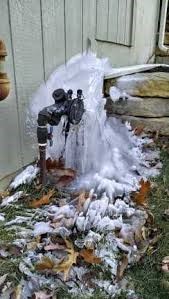 |
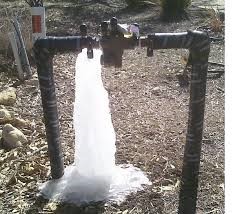 |
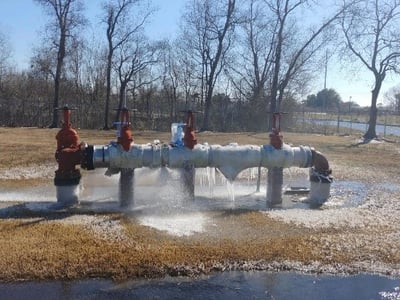 |
Pictured here are some real-life frozen backflow preventers. As you can see, expanding water inside a backflow preventer causes all kinds of problems. It can freeze the internal checks, causing them to break or malfunction. It can damage the relief valve, allowing water to escape and cover the surrounding area with ice. Or it can warp the bronze, cast iron or stainless steel body, preventing the internal parts from seating correctly.
Sometimes frozen backflow preventers are obvious: you immediately recognize the problem and how to fix it. You may find broken ball valves, ruptured sensing lines and cracked valve bodies.
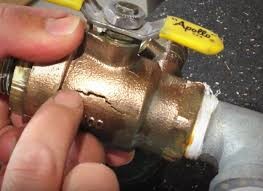 |
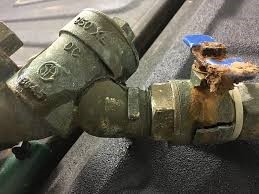 |
Other times, the effects of frozen backflow preventers are not and cannot be immediately known. Double-check (DC) backflow preventers do not have a relief valve to signal when something is wrong. If they freeze in the winter, they will provide zero backflow protection until a certified tester discovers the problem during routine inspection. This could be up to a year or more after the fact, depending on the enforcement of a municipalities’ backflow testing program, of no protection for your water supply. Frozen backflow preventers pose a serious risk!
The good news? There are several ways to protect your backflow preventer from becoming a popsicle flavor you do not want to try.
An ASSE 1060 rated enclosure with the appropriate heater will provide your backflow preventer with a freeze-free environment, even if the outside temperature is -30℉. We don’t often see these temperatures in the lower 48 states, but in Alaska and Canada, where some of our backflow enclosures are installed, these Arctic extremes are not uncommon! Even in the most frigid conditions, backflow preventers installed inside these enclosures remain protected within a 40℉ environment.
Winterize Your Irrigation System
If there isn’t water in your backflow preventer or irrigation system, there is nothing to cause freeze or expansion. Consult your local irrigation contractor to professionally winterize your irrigation system. This intricate process will purge the entire system, and contractors sometimes even completely detach the backflow preventer for the winter. Just remember to have the backflow preventer reinstalled each spring as irrigation chemicals are some of the worst contaminants for the water supply.
Move to a Country on the Equator
As I travel across the country, I often hear something like, “We live in a warm climate, so we don’t need freeze protection for our backflow preventers.” This is simply not accurate, and most of these people have likely replaced numerous backflow preventers throughout their system at great costs to either municipalities or customers. With deep freezes over the past few years in Miami, Houston and even Phoenix, there are no longer areas in the US that don’t need to seriously consider and implement some form of freeze protection.
The physics of water is constant, whether inside a delicious popsicle or inside a device like a backflow preventer. Unfortunately, backflow preventers have precise and integral components that can be easily damaged by ice. Be prepared to protect your backflow preventers when temperatures drop below freezing, or be prepared to repair and replace all the valves in your system.
Face every winter with confidence. The best protection you can provide your equipment is an ASSE 1060 enclosure with a slab-mounted heater. Safe-T-Cover enclosures lead the industry in quality, protection, durability and ease of maintenance. With best-in-class lead times from our newly-expanded Nashville facility, and the ability to quickly fulfill standard and custom requests all at a competitive price, our enclosures are an investment in the longevity of your equipment and property, and in protecting one of our most sensitive natural resources.




